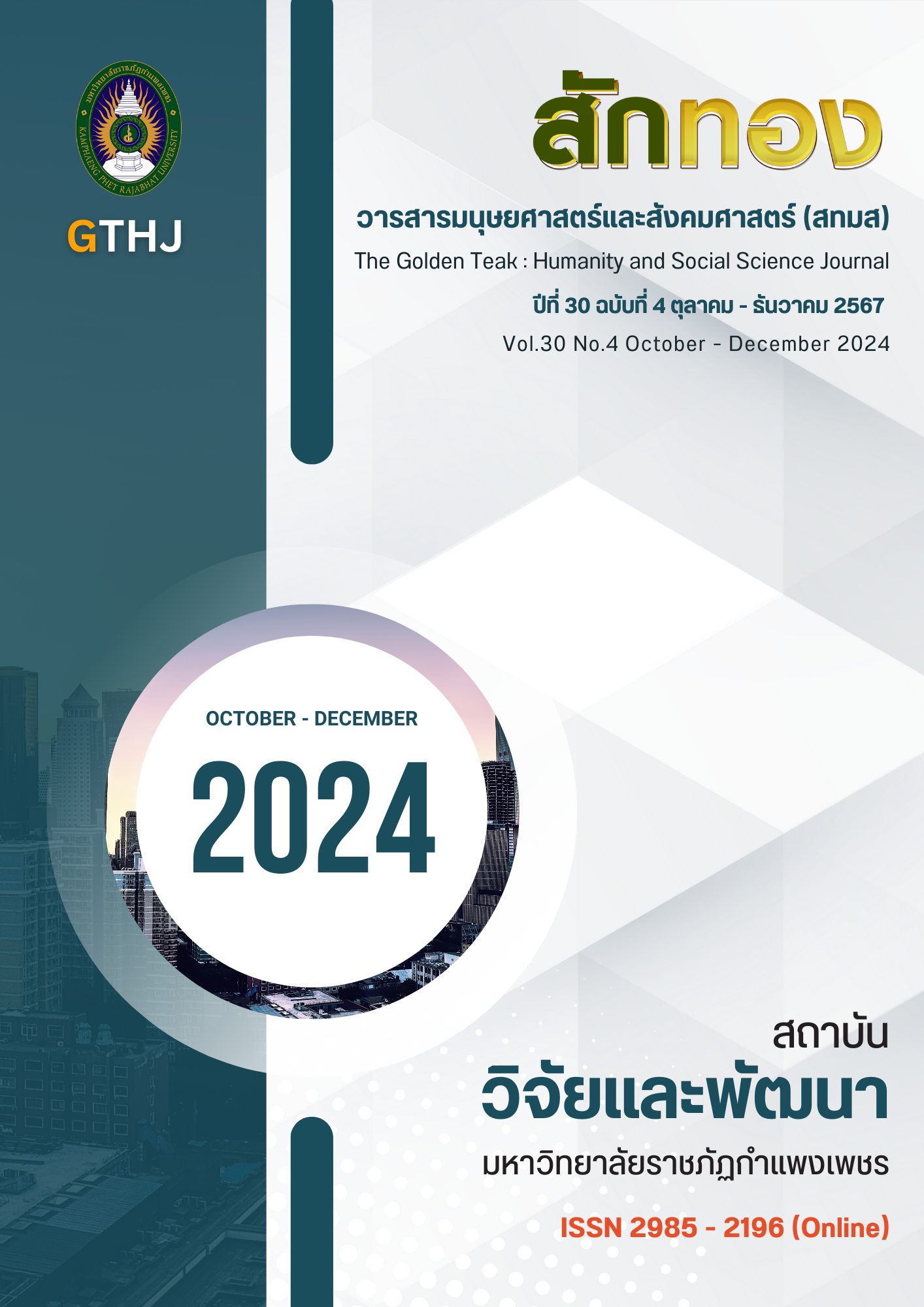News Exposure and Uses of Social Media of Rajabhat University Students in Bangkok
Main Article Content
Abstract
The purpose of this study is to examine the demographic characteristics of Rajabhat University students in Bangkok who are exposed to news and the use of social media. The sample consisted of 400 students from five Rajabhat Universities in Bangkok who were in their first to fourth years of bachelor's degree programs during the first semester of the academic year 2021. This study employed a quantitative survey research methodology, collecting data through questionnaires. The results of the research showed that there were more female students than male students, aged between 18 and 19 years old. These students were studying at Dhonburi Rajabhat University, Bansomdejchaopraya Rajabhat University, Phranakhon Rajabhat University, Suan Sunandha Rajabhat University, and Chandrakasem Rajabhat University. The majority of the samples were freshmen in the Faculty of Business Administration, with a GPAX between 2.51 and 3.00, an income of 5,000-7,000 baht, and residing in Bangkok and its vicinity. Regarding social media exposure behavior, it was found that, for most of them: 1. Frequency: They were exposed to social media on a daily basis. 2. Duration: They were exposed to social media for more than one hour. 3. Time: They were exposed to social media between 12:01 and 14:00 hours. 4. Types of Programs: The most popular content was game shows. 5.Reason: The majority admitted they used social media to gather information for further discussion. 6. Social Networking Platform: The majority used Facebook. 7.Devices: They used mobile phones. 8. Social Media Type: Webboards on various websites were mostly used. Regarding the use of social media by Rajabhat University students in Bangkok, the overall opinions about the use of social media were at a high level ( = 3.61). The most popular use was to receive news and information related to their interests (
= 3.83), followed by using social media to relieve stress from online studying (
= 3.80), receiving news and information about various social events (
= 3.76), while the least popular use was increasing general knowledge (
= 3.40).
Article Details

This work is licensed under a Creative Commons Attribution-NonCommercial-NoDerivatives 4.0 International License.
บทความที่ได้รับการตีพิมพ์เป็นลิขสิทธิ์ของวารสาร สักทอง : วารสารมนุษยศาสตร์และสังคมศาสตร์ สถาบันวิจัยและพัฒนา มหาวิทยาลับราชภัฏกำแพงเพชร
ข้อคิดเห็นใดๆ ที่ปรากฎในวารสารเป็นวรรณกรรมของผู้เขียนโดยเฉพาะ ซึ่งมหาวิทยาลัยราชภัฏกำแพงเพชรและบรรณาธิการไม่จำเป็นต้องเห็นด้วย
References
Buranakit, S. (1998). Thai web site and social integration process. Master of Arts, Mass Communication, Chulalongkorn University. [In Thai]
Chatawittayakul, N. (2016). Suggest how to choose social media to suit your marketing strategy. [Online]. Available : http://www.digithun.com/social-media-strategy [2021 June 17]. (in Thai).
Cheyjunya, P., Wiwattananukul, M. & Anawatsiriwong, T. (1995). The concept of Communication Arts. (5 th ed.). Bangkok : Chulalongkorn University. [In Thai]
Digifast, A. (2015). Basic tools of digital marketing (online marketing) that is commonly used today. [Online]. Available : http://pantae.com/content/Basic tools of digital marketing (online marketing) that is commonly used today [2021 May 09]. [In Thai]
Inna, N. (2005). IT and mass communication. Bangkok : Chamchuri Products. [In Thai]
Jaichansukkit, P. (2012). When the world changes : reaching the turning point of communication. Communication Change, 1(1), 64-75. [In Thai]
Journalist's Day Book (2007). The future of newspapers in an era of competition and challenge. Communication and Journalism. Bangkok : Thai Journalists Association. [In Thai]
Kanhasen, S. (2002). Behaviours and factors effecting the decision on using the on-line newspapers service of the population in Bangkok. Master of Arts Faculty of Journalism and Mass Communication, Thammasat University. [In Thai]
Krejcie, R.V. & D.W. Morgan. (1970). Determining Sample Size for Research Activities. Educational and Psychological Measurement, 30(3), 607-610.
Srinak, C. & Sripraphan, K. (2013). Analysis of Types, Patterns, Content and Usage of Social Media in Thailand. Master of Arts, Communication Studies, Chiang Mai University. [In Thai]
Suansaen, C. (2013). Behaviours of receptiveness, motivation, satisfaction, and information utilization News on Thai newspaper websites of readers in Bangkok. Master of Arts Faculty of Journalism and Mass Communication. Thammasat University. [In Thai]
Supachalasai, S. (2019). Project to survey behaviour and trends in media consumption in Thailand. Complete study report Thammasat University Research and Consulting Center Office. [In Thai]
Yamane, T. (1970). Statistics: An introductory analysis. Tokyo, Japan: John Weather hill, Inc.


